#Conformist society
Explore tagged Tumblr posts
Text
Why do people actually write in cursive. The whole point of writing is to be able to fucking read it. Write in block capitals like I do you conformist fucks.
41 notes
·
View notes
Text
What the Bible says about Babylonian System
Luke 21:24
In the sixth century BC, a new world—"the times of the Gentiles"—was ushered in. The Babylonian image has influenced the world since that time.
John W. Ritenbaugh Prophets and Prophecy (Part 3)
Galatians 1:4
Many professing Christians view everything from the perspective of this world, blindly assuming it is God's world. They see certain forces of evil in it, which they feel they must oppose. In this vein, they see the Christian duty as working to make this a better world.
However, this concept does not square with Scripture. The Bible speaks of Christ “deliver[ing] us from this present evil age” (Galatians 1:4). Human society is not of God's making, but Satn's, as are its systems of government, basic philosophies, and business and religious practices. All nations are deceived, swayed, manipulated by the Devl (Revelation 12:9; 20:2-3). In other words, our civilization is Satn's evil handiwork, not God's.
God's Word tells us to flee from the midst of Babylonian society (Isaiah 52:11; II Corinthians 6:17; Revelation 18:4). Speaking to the Jews, Jesus says, “You are from beneath; I am from above. You are of this world; I am not of this world” (John 8:23). Later, when questioned by Pilate about His Kingdom, “Jesus answered, 'My kingdom is not of this world. If My kingdom were of this world, My servants would fight, so that I should not be delivered to the Jews; but now My kingdom is not from here'” (John 18:36). Although Jesus lived in this world, He clearly saw Himself as a “citizen” of God's heavenly Kingdom. The same holds true of those who follow Him (Philippians 3:20).
Martin G. Collins Would Jesus Christ Vote? (Part One)
Revelation 18:11-13
The merchants, who gained wealth and perverse pleasures from this world's system of religion and commerce, cry and lament because it satiated their greed for materialistic acquisition and their lust for self-pleasure. As the Babylonian system incorporates every expression of corrupt government, so its prostitution includes every corrupt economic system and idolatry. Even human beings are reduced to cargo, traded as slaves to drive the engines of production, prosperity, and sinful pleasures.
Sadly, the modern descendants of Israel have promoted and become part of this self-serving, perverse world system. Sin inevitably brings its own punishment, and there are always consequences to disobedience. Thus, when today's Israelites go into captivity in the last days, t
Martin G. Collins Slavery and Babylon
Revelation 18:2, 4 (KJV): And he cried mightily with a strong voice, saying, Babylon the great is fallen, is fallen, and is become the habitation of devils, and the hold of every foul spirit, and a cage of every unclean and hateful bird. And I heard another voice from heaven, saying, Come out of her, my people, that ye be not partakers of her sins, and that ye receive not of her plagues.

#Indie#Resistent#Authentic#Humble#integrity#resist#corrupt system#babylonian pagan system#Conformist society#weakness of paganity#Truth#Makes#Free#We are#The#Strong#Ones#Wise#Wisdom
7 notes
·
View notes
Text
“Every society honors its live conformists and its dead troublemakers.” — Mignon McLaughlin
120 notes
·
View notes
Text
say what you will but i was getting really upset about life then i started doing character analysis why hermes to amon there is such a big character shift despite being the same soul and thought about it long and hard and was like damn i dont feel so bad anymore afterwards.
#i looove my man built like a scared horseeee#and the answer is he is really conformist (or tries to be) to his society even if he disagrees and they both have different values
11 notes
·
View notes
Text
I’ve just discovered that there are a multigenerational group of senior teachers in my school who are obsessed with The Secret History but they haven’t even started an exclusive secret society of the most intelligent and high-achieving students in the school or anything. Words cannot even describe how much I resent the adults and especially the teachers in this world.
#none of them seem to have personalities and they’re all so conformist#teachers in books can be cruel or manipulative or bad influences but at least they’re interesting#and not just rude and uncaring#ilona’s words#dark academia#the secret history#if we were villains#the basic eight#dead poets society#i hate it here
11 notes
·
View notes
Text
XI. They reproduce in monotony
Lecce, ‘Chiesa di Santa Croce’ © They reproduce in monotony Living in fearful naivety In the least amount of effort In chatter seeing their full realization Sheep souls with no direction Other than blind observation Of inertia and self-obliteration (From ‘The Meaning Of Life Is To Fight: A Collection Of Poems‘) Here, the author is again commenting upon what he sees as the behavior of the…
#anti-conformist message#blind obedience critique#critique of daily routine#critique of modern society#cultural criticism through poetry#emotional stagnation#existential poetry#fear-driven living#George Orwell inspired#monotony and mediocrity#Orwellian themes in poetry#philosophical poetry#poetic existentialism#poetic social commentary#poetry about conformity#poetry about inertia#poetry against complacency#self-obliteration#shallow modern life#sheep mentality
1 note
·
View note
Text
No, shifting is not for everyone



There, i said it. Shifting is not for everyone. Although, it’s not because of an impossibility to do it, neither a “genetic component” that gives you the ability to shift. The reason, is that not everyone is able to keep their minds open. Not everyone can leave beyond all the beliefs society has imposed us. Not everyone is ready to know, to understand the truth about existence. Not everyone is brave enough to see shifting is real even if the evidence is in front of their eyes.
Shifting changes everything. Our perception of life, the concept of death. The understanding of what humans are truly capable of, the nature of consciousness and immortality itself.
We, the eternal dreamers, who from an early age wanted to be part of our favourite films and universes. We’ve been blessed with an open mind. We are not conformists. We’ve been bold enough to understand and accept life isn’t as simple and dull as it seems to be.
We, shifters, were capable of leaving the reason and the logic behind and jump in an ocean of opportunities. We’ve said no to the limits and made possible what most people think impossible. We’re the few fortunes ones that are capable of doing that. You found shifting for a reason.
Don’t give up. Do not dare, because shifting isn’t for everyone, but it is for you.
Go shift.
#reality shifting#shifting blog#shifting antis dni#reality shifter#loa#4d reality#loa tumblr#loassumption#neville goddard#shifting community#shifting tips#shifting realities#shifting consciousness#shifting stories#shifters#shifting#shiftingrealities#anti shifters dni#hogwarts shifting#shiftblr#shifting advice#shifting diary#shifting method#shifting motivation#shifting to desired reality#shifting storytime#shifting to harry potter#shifting to hogwarts#shifting to percy jackson
866 notes
·
View notes
Text
Case and point: Reading "these people should shut the fuck up" as "these people should burn" is needlessly antagonistic
Go hang out in the radical neurodivergent tag then? Fuck.
Cripple posting in the cripple tags: delivery trucks were parked across all the accessible parking so I couldn't get groceries today, fuck inaccessibility and ableism
Like 10 random accounts on this site that are dedicated to being needlessly antagonistic: That means you haven't known the triumphs and defeats, the epic highs and lows of Neurodivergency
#cripple punk is pro hate so fuck off. its hatred of ableist standards and definitions#hatred of being systemically barred from participating in society. hatred for the medical industrial complex#hatred for ableism - including lateral ableism by conformist disabled people#hatred for inspiration narratives and so much more#it's radical self acceptance regardless of society's constant declaration that we're better off dead#if you're looking for a positive no hate zone free from rage you are in the wrong fucking place
447 notes
·
View notes
Text

Mark: Would you like to go with me? Daria: Where? Mark: Wherever I'm going. Daria: Are you *really* asking? Mark: Is that your *real* answer?
#Go with him#Wherever#he goes#Yes#zabriskie point#Finding each other#selfless love#Far#From#The#Conformist#Society
4 notes
·
View notes
Text
The Residence: Self-Acceptance & Embracing Different Ways of Being ❤️
Contain Mild Spoilers that doesn't reveal the murderer! 🤣
One of my favourite scenes in The Residence is the birding trip that Cordelia takes her nephew on, where she tells her nephew that every birder makes sense of what they experience differently:

Just like everyone makes sense of Life differently and there's no single "universally correct" way to Be, even if others, including those you love, don't understand your Way of Being and label you "unhealthy, single-minded, obsessive, difficult, stubborn, uncompromising", just because your way is unusual or frustrating for them:






Even though the natural differences in our Ways of Being can cause friction, as well as hurt & frustrate us in turn when others label us negatively, it doesn't necessarily mean that we need to change our Ways of Being just to fit into the "norm", because our so-called "flaws" (which are really just differences in Being) can be a great help to others when applied to the right Context.
Which we saw when Cordelia used her unique gifts to find her sister Aimee's missing strawberry sock that their late brother had gifted to Aimee, so Aimee can feel better after their brother's recent passing (this was why Aimee was so upset by the missing sock, coz it felt like she was losing a piece of her brother who they'd already lost).






Just like finding the missing sock was what Cordelia could do for Aimee, accepting ourselves and each other to embrace our unique gifts is what we can all do for each other, so we all have the space to be our authentic selves while connecting with and helping each other despite our differences, and oftentimes because of our differences.
When we can do that, when we can embrace the Diversity in our Different Ways of Being, we may find that what are commonly considered "flaws", "weaknesses", or "undesirable, inconvenient traits" can turn out to be our greatest collective strengths 🥹❤️
I find this message of Self-Acceptance and Embracing Diversity in Ways of Being a very very moving message in a world that tends to label neurodivergent and non-conformist people negatively by default 🥹❤️
Not to mention, even while Cordelia's her unapologetic self throughout the case, she tempers her Nature where she needs to, such as when she drops her investigation immediately when Chief Dokes, the one person who's been in Cordelia's corner with unwavering trust & support throughout the case and her career, needs protecting from the fallout to his job.
Which shows us once again that Cordelia was never the "difficult, uncompromising, stubborn" labels that people different from her slapped on her, and she didn't let those labels stop her from being her True Self to help others 🥹❤️
Coz let's not forget Cordelia's great Heart, which is evident when she solved her first case of the missing strawberry sock, not coz she's "difficult or uncompromising", but coz she loves her sister & doesn't want Aimee to be sad 🥹
Ironically, it's probably the rest of the world that's more "uncompromising" than Cordelia when it comes to accommodating Different Ways of Being, coz unlike "normal" people who tend to want others to conform to their "normalcy" as alluded to by Cordelia's phone conversation with adult Aimee who reminded Cordelia her son's not like Cordelia, to which Cordelia replies she knows that and she isn't trying to turn her nephew into her, she just wants to make sure he's a little less like Aimee and more like himself (which tells us Aimee's parenting is probably quite prescriptive), we see Cordelia giving her nephew freedom to be himself while she tries to find the bird he wants to see, and she even tells him "you can do it how you want" when he asks what he should write in his own birding book 🥹❤️
It's precisely because Cordelia wasn't accepted by general society for her differences that she innately understands "everyone does it differently", even supposedly "normal" folks, and it's more important for us to accommodate Different Ways of Being rather than to enforce some universal false standard of "normal" on others.
Coz just like it was never about "us versus them" in AB Wynter's mind or in Cordelia's, in Life it's not about "us versus them" either.
It really is just Us.
That is why I L❤️🔥VE Cordelia Cupp and this show 🥹❤️
233 notes
·
View notes
Text
Thoughts on "Escape from Camazotz"
Oppressive Suburbia, Conformity, and Season 5 Themes

I've long thought that a major focus of Season 5 will be the contrast between the families of The Wheelers and The Byers, and exploring how non-traditional family environments can be freeing vs the oppressive structure of the nuclear family.
In a Wrinkle In Time, Camazotz is a planet controlled by the big bad of the book, the "IT", who forces the citizens into a conformity that resembles American suburbia. All of the houses the same, the citizens the same, doing the same things at the same time without individual identity. Without anything different. Different means a lot of things, but with Stranger Things dropping different in reference to Will's identity and the presumable themes of this season, it will heavily codify as queerness and how it threatens the cisheterosexual family model.
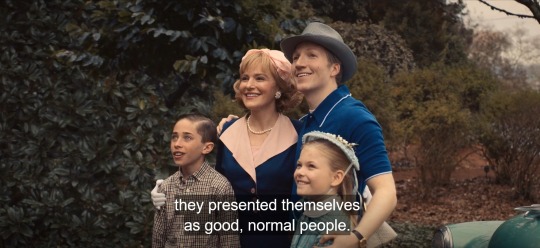
Henry was raised in the 1950s, a decade still revered by conservatives for it's traditional family dynamics that supposedly were the peak of culture and happiness for all. That was all a lie, of course, and Henry knew so as he shows to Nancy and Eleven during his monologue. The second most conservative decade aside from the 1950s in American society is widely considered to be the 1980s.
The Creels will serve in parallel to The Wheelers; the worst example of what they could become and the damage that this type of family could do to a child that is different in any way. Notice how Vecna selectively shows Nancy visions of The Wheelers dying, but not anyone else she may consider family or friends (like Jonathan).
That is; unless they change their ways and come together as a healthy functioning family facing their traumas, The Wheelers will be toast.
Karen has been moved up to a main character role this season. Ted's actor says the father starts to show up more for Holly (hold that) and realizes he wants to act differently. Holly has been recast. Finn has said Mike goes on a much more personal journey this season, and steps up as a leader.
Oh, also: the catalyst for all of this is that Holly goes missing. The contrast will help show how the Byers (including El and Hopper here) were able to pull together and help solve Will's disappearance, versus how the Wheelers as a closed off nuclear family grapple with Holly's vanishing.
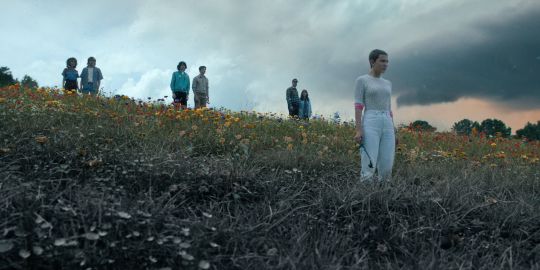
Each of the Byers is in some kind of a non-1950s conformist relationship, but particularly Will (not in one now but we all know he will be). I think El might represent, after she breaks up with Mike, the fear of the unmarried woman being satisfied without a husband. The above shot really emphasizes my point.
I predict that Will will end up coming out to his family rather early on, and we will see all of them immediately accept him with little surprise or push-back. Will is a visible gay man who comes from an open minded non traditional family (divorced, non-married, adoptive) that is willing to have honest conversations.
But this theme will place the most focus on the Wheelers. Mike is the main character of said family and this will particularly focus on his arc, and his acceptance of his queerness in the midst of suburban conformity.
He is not visible, he comes from a Reagan-supporting family who don't communicate with each other. He is not particularly close with his family like Will is. He pushes his feelings down and tries his damn hardest to be normal despite it all. His trauma hasn't really been addressed at all. He is falling back into his usual habits - the one thing he dared to do different (grow his hair long) has gone back to how it was.
It's not all doom and gloom though. This season above all will be a redemption arc of the American nuclear family, how they choose to escape their conformity and learn to be there for each other, thus overpowering Vecna. Not that the Wheelers are going to end this personally.
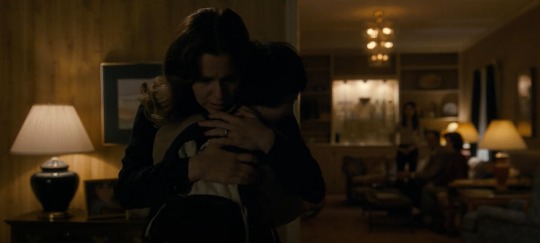
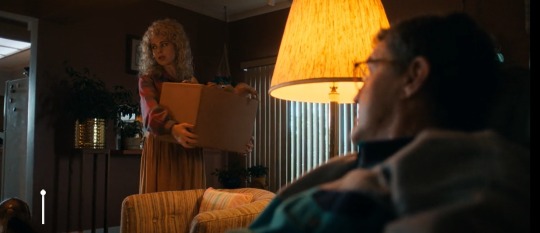
"Great, more hysteria. Just what we need". "It's the news, now indistinguishable from the tabloids".
#stranger things#mike wheeler#the wheelers#the byers family#byler#will byers#st5 speculation#henry creel#the specificity of this title alone and the themes gives me no doubt that these are all real#i also think this is the episode where byler is canonized and where mike finally escapes conformity#holly wheeler#ted wheeler#karen wheeler#i didnt really mention nancy at all sorry girl#if youre reading this PLEASE search up my username on youtube you will find it SO RELEVANT
514 notes
·
View notes
Text
"I love him, Father, I truly truly do, I love him as much as Queen Naerys loved Prince Aemon the Dragonknight […]" (Sansa III, AGOT) “Wed?” Sansa was stunned. “You and my aunt?” “The Lord of Harrenhal and the Lady of the Eyrie.” You said it was my mother you loved. But of course Lady Catelyn was dead, so even if she had loved Petyr secretly and given him her maidenhood, it made no matter now. (Sansa VI, ASOS)
I find that these little passages reveal something interesting about sansa's personality. specially when you juxtapose how she's characterized in the text and her worldviews here, and how at first glance they may seem contradictory. but first, let's take two things into account:
the patriarchal society of westeros is very strict on women's sexuality. which means that not only is female virginity held in great value, but also female adultery is very firmly condemned by everyone, unlike men who are allowed to maintain public mistresses and flaunt their bastards everywhere.
sansa is characterized as the conformist, the one who internalizes her society's rules. she's very religious, she's a proper lady in every sense of the word and she often says and does exactly what she's told.
and yet, in these passages we can see that sansa does not care much about societal rules when it comes to intimate feelings. she often hails aemon and naerys' (supposed) forbidden love without a single care that queen naerys was bound by duty to a husband and aemon was meant to be loyal to his king. but most astonishing of all is her nonchalant response to petyr's (false) information that her mother was not a virgin when she married. on one hand it may speak on sansa's views towards women's sexuality, since her current friends (mya and randa) are girls who engage in sex out of wedlock, and she never judges them, just like she doesn't judge her mother for apparently doing the same, and catelyn continues to be the person she admires the most. sansa also doesn't view her parents' relationship any differently because of this, the marriage between ned and cat is still as happy as she remembers, because all that matters to her is that there was love in the home she grew up in. the thing about sansa's character is that she plays by the rules up until a certain point, but on the inside she always prioritizes emotion over societal norms, and that's why she looks more upset at petyr for marrying someone while claiming to love another, because in her mind he's being unfaithful to his heart by marrying out of practicality. we have examples that showcase sansa's prioritizing feelings in AGOT when she, the good daughter, disobeys her father for the first time because she thought she was in love with joffrey, and in ASOS where she never thinks she owes tyrion anything just because he's her husband. so it comes as no surprise that she's so infatuated with the love story of an adulterous and incestuous relationship like aemon and naerys'. one of the main themes in this series is that feelings don't care about honor. and if love is the death of duty then sansa seems more than happy to see duty killed for the sake of love.
of course this doesn't mean she'll stay that way, specially when she's already lost her so much of her innocence and is now tangled in petyr's schemes where she must set her own feelings aside in order to act on his plans. and despite her silent judgement of petyr marrying someone he didn't love, her current betrothal with harry is an entirely practical union on her part since she feels nothing for him and only sees him as a means to an end. there have been many instances since book 1 where she was able to turn off her feelings in order to withstand certain situations. so... what even is sansa's mind? an interesting universe on its own for sure.
I just think sansa's romanticism is one of her most interesting traits (for better and for worse), something that truly contributes to the distinctiveness of her character, and I really hope petyr or anyone else are unable to completely kill that in her.
573 notes
·
View notes
Text
Everyone is probably familiar with the Bechdel test - to pass it, a work of fiction must have at least two women who talk to each other about something other than a man.
But I propose a broader sort of Bechtel test, one that asks, does this woman have opinions, interests, pursuits, or abilities beyond the traditional "feminine" spheres of children, relationships with men, domesticity, beauty, and the like?
If you're creating characters that exist in some of the relatively retrograde patriarchal societies that have existed throughout history, this can be difficult to do without slipping into anachronism. Yes, there were women who went against the grain, but realistically, they were in the minority, because society was explicitly structured to rid women of independent thought and action, and confine them to the sphere of marriage and domesticity. Unfortunately, those tactics worked, which is why it took so long for the fabric of society to change.
And while women progressive for their time are fascinating to write about, not every woman can be that. If every woman was the suffragist, or the One Female Ranger, or the independent single mother or the rebellious princess, not only would it be repetitive, but it would be unrealistic.
The conformists, even if they exist for no other reason than to be a foil to the progressives, still need to be individuals in some way that transcends traditional female spheres. That is the subversion that I feel writers need to work on when writing the tradwives, the princesses, and the "girly girls."
108 notes
·
View notes
Text
Stede Bonnet and the Subversive Shirt
In season one, despite the colours, lace, and detailing, Stede’s dress is mostly conformist in cut and style. His shirts are high-buttoned, cravated, and do not show much flesh below his chin. Coupled with the pantaloon and waistcoat, Stede’s wearing the clothes of traditional masculine presentation of his era.
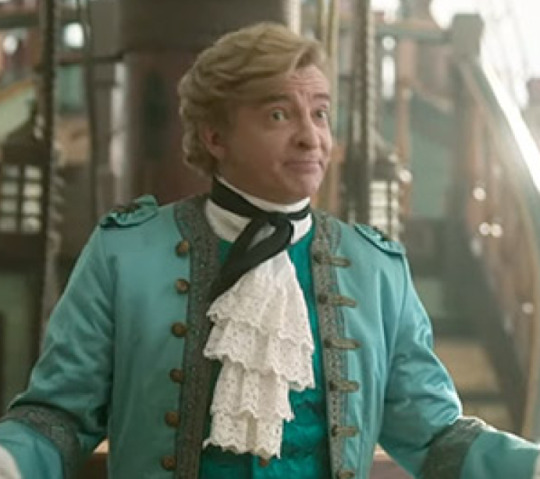

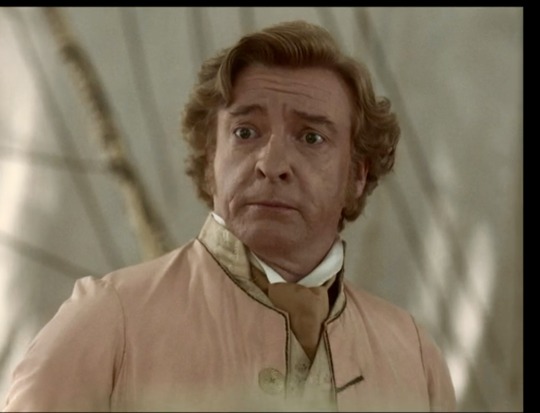
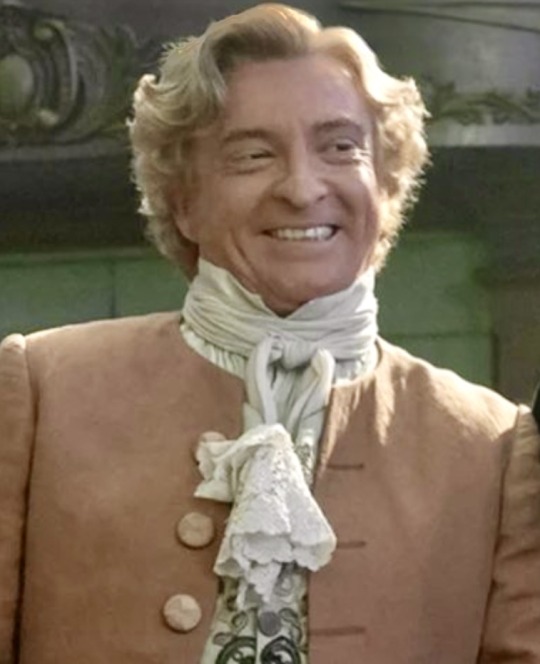
There are times Stede’s clothing becomes less formal. During the sword practice with Ed in 106, Stede’s shirt is open and the cravat loosened. Again, in 107 we see Stede in his open nightclothes wandering on deck. During evening story hour, his jacket is removed. Stede usually seems more relaxed during these moments too.
Stede’s style changes properly on the second leaving of Bridgetown. What Stede is wearing openly as he drags the boat to sea is a rather romantic poet-pirate look with billowing shirt and sash. The look has links with future nineteenth-century Romantic freethinkers, championing individualism, revolution and liberty - including sexual liberation.

The open-neck shirt was popularised by Byron and Shelley a hundred years later. It was a deliberate choice of styling in opposition to enforced gender presentation and monogamous heteronormativity. The fashion of the times, similar to the 1700s, was high collars and neck-wrapping in order to force the holding of the male head in a stately and erect manner. It’s all about rigidity…
For an English gentleman of the eighteenth and nineteenth centuries, to have his shirt open and loose in public, was a sign of effeminacy. It was women who showed their décolletage in society, who were allowed a softer presentation; this new style hinted strongly at sexual and gender nonconformity. Women were viewed as more animalistic, men as cultured. Cultured people cover up. Softness, looseness - these are aspects of female sexuality, a bit bestial. And women are also a little bit insane. Why would any man, especially a man of status, want to present as feminine and lesser? And what does it say about patriarchy if some men actively choose to relinquish their privileged status by presenting more effeminately? It’s dangerous.


By today’s standards, Byron was pansexual and polyamorous. Shelley’s sexuality is less clear, but he was viewed as a subversive atheist and disinherited. Both might consider themselves nonbinary today. Shelley especially seems to have had a strong gnc presentation. Both left England for more liberal Europe.
I feel the costume department must’ve made a very deliberate and informed choice regarding Stede’s shirts post season one, but I don’t feel it’s the one some people think it is. I know part of DJenks stated aim was to ‘make Rhys Darby as sexy as possible’, but it’s not about appearing more masc. just because he’s showing more flesh. It’s about appearing more Stede. Stede is expressing a new-found confidence in his sexual identity and gender expression, by choosing a more freer, less structured, less traditionally masculine way of dressing, associated rather presciently with future Romantic liberalism. It seems poets and pirates have more in common than we realise. And both were considered dangerous for questioning the system.
However, Stede is also an individual in flux and he circles back to a part of his former self. The Red Suit is a sort of hybrid male/female costume. The cuffs, detailing and shirt itself are femme. But there are elements of traditional masculinity which are quite toxic. The epaulettes reinforce the inverted masculine triangular shape. Anyone who grew up in the 1980s will remember their mothers feeling forced to wear exaggerated shoulder-padding as they entered male-dominated workspaces. They also enforce military rank. Stede thinks he needs this imagery to ‘be the Captain’. He doesn’t. The exaggerated coattails are also absolutely synonymous with upper class male power. It’s masculinity as performance and power-play. Stede needs to let all of this cursed patriarchal nonsense go.

As so often’s the case in OFMD, external struggle, this time with the crew over the Red Suit, could also be a manifestation of Stede’s internal conflict and shifting identity. It’s a final letting go of patriarchal ideas, especially around captaincy. The crew certainly don’t want it. Stede is (more than) adequate just as he is. At the end of all the pushing and pulling, Stede keeps the most relevant bit of the outfit - the shirt. It’s the least restrictive part, the more feminine and therefore, the more subversive on a male body. It’s a sartorial representation of a changing Stede.
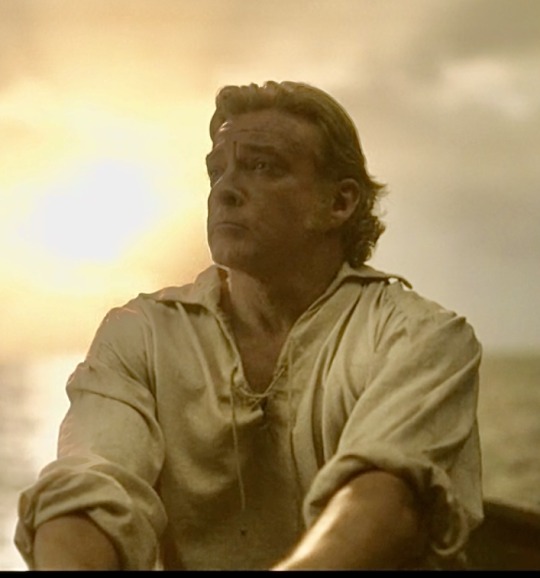


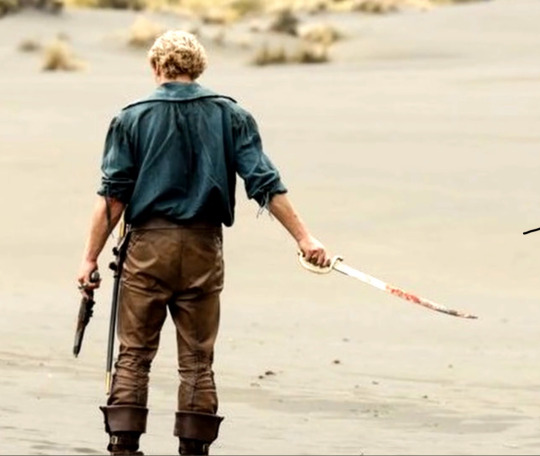
The three shirts worn in series two are deliberately opened-collared and low-cut, showing more and more of Stede’s chest. This is a traditional feminine aesthetic which historically on a man, at least in the anglosphere, was considered subversive and dangerous. And Stede couples his shirts with a different sort of masculinity, a leather trouser. Class-wise, this is a traditional working man’s garment. Through his new choice of clothing, Stede is rejecting entirely his previous role within patriarchal hegemony, both the imposed status and imposed gender norms.
This was in my drafts a while but inspired to try and pull it together by @celluloidbroomcloset posts here and here
#stede bonnet#textiles#signifiers#poet shirt#anti establishment#antinormative#queerness#lord byron#percy bysshe shelley#romanticism#liberalism#ofmd
185 notes
·
View notes
Text
I think we don't talk enough about the implications of Val Velocity's main color being white. So I'm writing a short essay about it.
About Val Velocity's character design
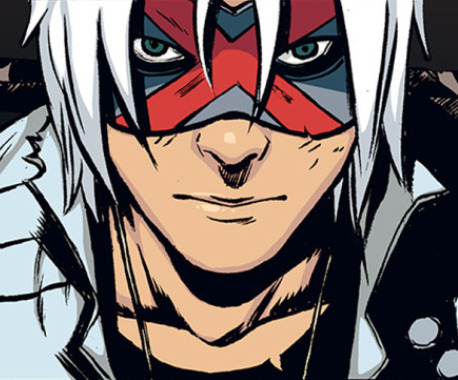
I need to start this off with a brief rundown of the narrative of Danger Days. Danger Days is centered around themes of self expression, anti-conformism and anti-corporation. The killjoys are rebels who are fighting BL/ind, an evil company that seeks to control every aspect of an individuals' life. The Killjoys fight with their appearance just as much as they do with guns. They use their flamboyant, eccentric and colorful clothing as a way to challenge the sanitized, conformist society that BL/ind is promoting. The mask, which in other media is typically used to indicate hiding one's true self, in the context of Danger Days takes the opposite meaning: the Killjoys' customized masks are the ultimate tool of self-expression. Each member of the Fabulous Four, the original gang of Killjoys, has a color distinctive to them, which matches the color of their gun.
In the context of Danger Days, whites and greys are used to symbolize lack of identity and conformism. This is evident if we compare the original Killjoys to BL/ind agents.
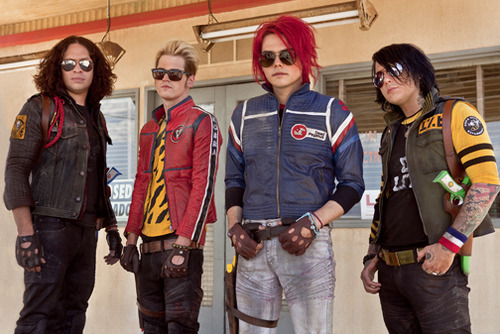
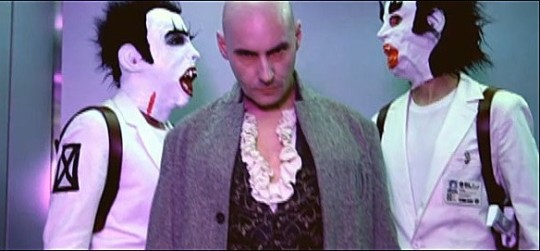
Now we get to Val Velocity as a character. His story takes place several years after the Fabulous Four, have been killed. Val is the leader of a group called the Ultra Vs, and he's trying to continue the legacy of the Fabulous Four. We learn that he particularly looks up to their leader, Party Poison. This is reinforced by the fact that his own gun is yellow just like theirs. However, Val is fundamentally different than the former Killjoys. He's arrogant, and he fights because he craves violence and glory, rather than to actually stand up for what is right.
His design and attitude conveys this quite well in my opinion:
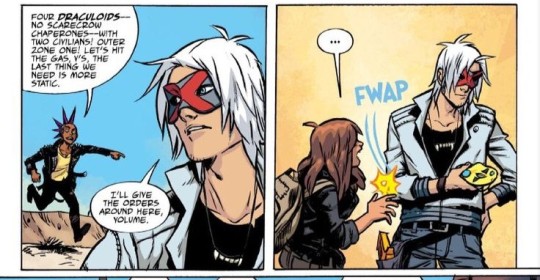
His palette is almost completely monochromatic. Hell, if he was placed amongst the BL/ind henchmen instead of the Killjoys in the pic below I wouldn't even bat an eye.
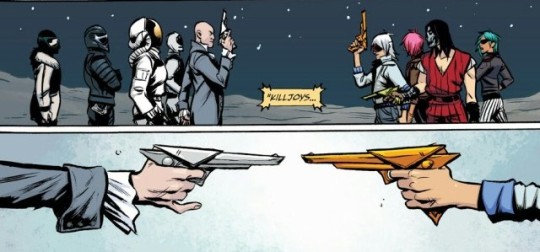
Val does not understand what the Fabulous Four standed for. He's not fighting BL/ind to protect people, or for the sake of freedom of self expression, or to fight conformism. In fact, Val's own sense of identity is shaky, as he's trying to follow the footsteps of someone else. Most of his identity revolves around trying to emulate Poison: even his own gun, which is almost as important as the mask to a Killjoy, is the same color as theirs. And the gun, something he has assimilated from someone else's identity, is one of the few things differentiating him from the BL/ind agents as far as color schemes go.
Val is not fighting for ideals, he's fighting because he craves violence. We see him hurting others with no remorse, often deliberately harming those who are weaker than him for the sake of it. In which way is his violence any better than BL/ind's?
The necklace with vampire fangs, arguably his most iconic design element, also plays into this. The Killjoys are fighting the Dracs, BL/ind agents who wear a mask with vampire fangs. In the context of Danger Days, his necklace is an open threat to the Dracs. His most prominent design element is a symbol of violence.
His palette being mostly white, in an universe where color is a synonym of resistence and self expression, is very telling. One would naturally assume that if he were to add color to his appearance during the story, it would be a sign of character growth. But the ttlotfk comics subvert that expectation, because when that moment comes it has exactly the opposite meaning:
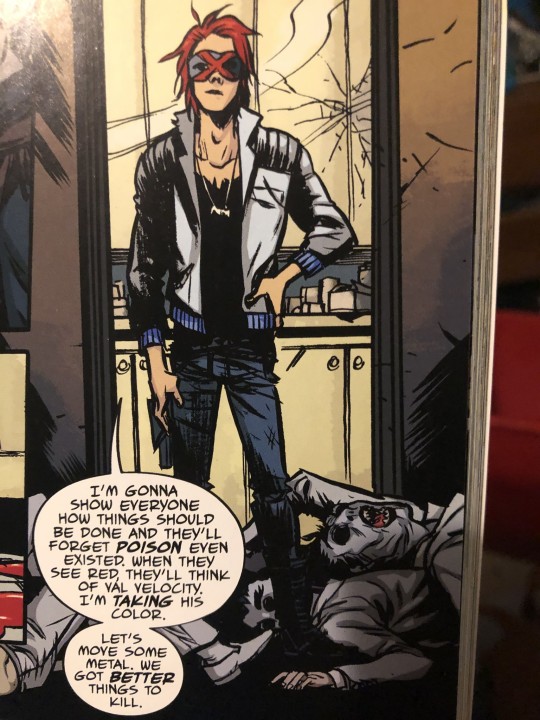
Val, after spiraling into paranoia and mania, dyes his hair "Poison red" in an attempt to appropriate Poison's legacy. This is the ultimate act of lack of self identity. The first time Val has tried to add color to his appearance, what should have been an act of self-expression, is him attempting to "take" someone else's color. But he cannot be Poison, or overshadow his legacy. Val is only a caricature of who Poison was: aside from the gun, and the bright red hair, he has nothing in common with them. He doesn't have the morals, nor he fights for the same ideals.
I think Val, as a character, is meant to be a testament to how in every rebellion there will be people looking for an outlet for violence rather than fighting for a right cause.
#mcr#my chemical romance#the true lives of the fabulous killjoys#ttlotfk#danger days#ttlotfk California#val velocity#kie being normal about media
153 notes
·
View notes
Text
Would a gyaru gal being offered the position of a harem girl be the ultimate win-win?
The platonic ideal of a Gyaru is a girl who loves gaudy, risque, and expensive fashion. Who wants to use this form of self expression to rebel against thel standards of beauty/proper women's behavior in Japanese society. Who seeks to be a non-conformist while expressing joy.
Wouldn't being in a massive polyamouros relationship with one powerful person, and all the other harem members. (I refuse to believe their were no harem girls who weren't intk eachother.) With the price of doing all that while living in luxury, more or less being contracted sex work, be a "Two Birds, one Stone" solution?
#this is me being VERY fucking bored at work#and having seen someone's drawing of a gyaru harem girl#gyaru#harem-talk#(i guess that can be the tag I use for this?]
114 notes
·
View notes